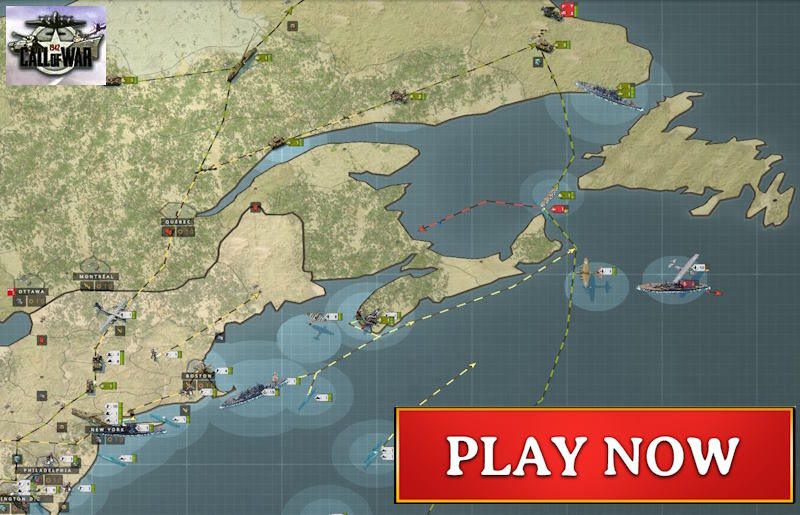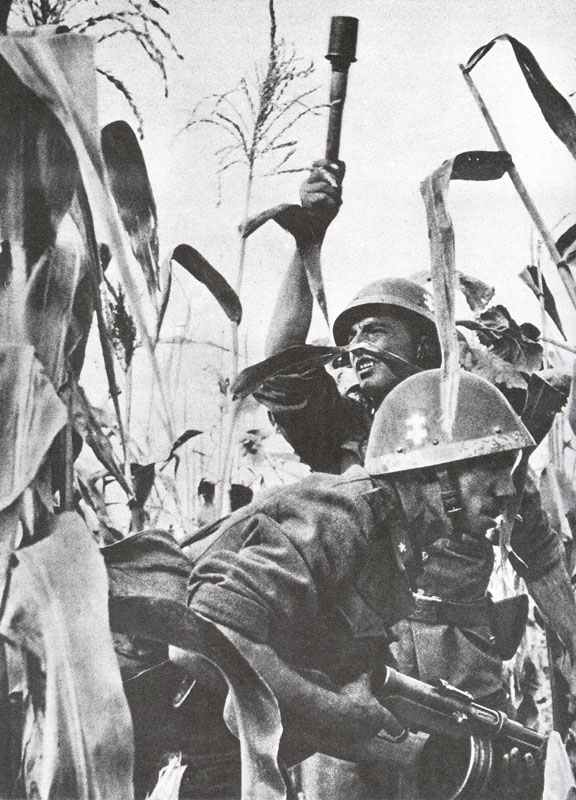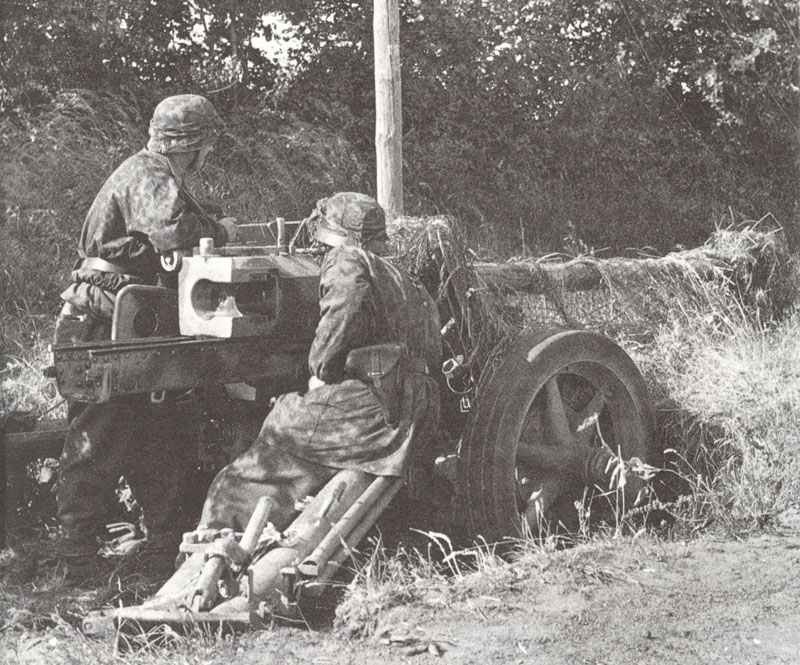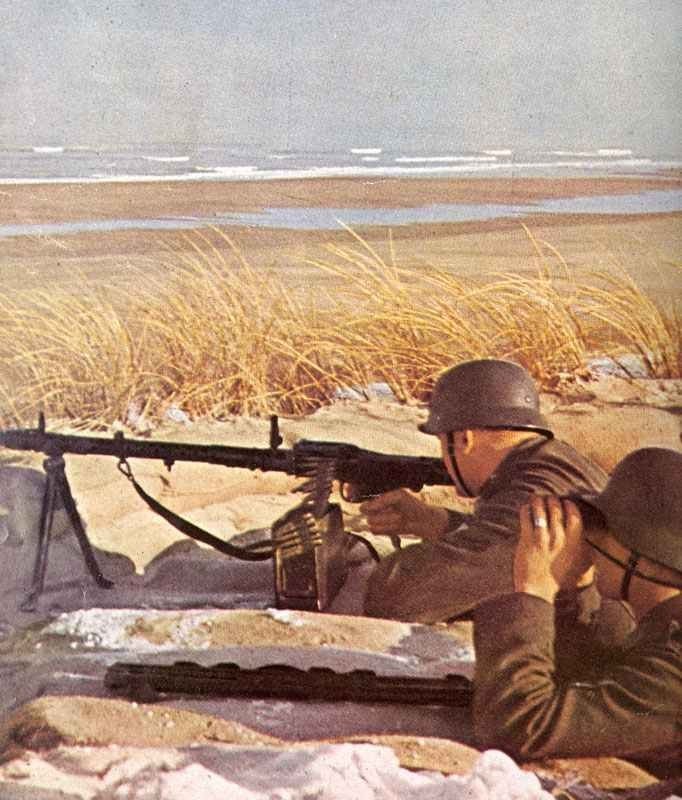First self-loading pistol German Mauser Automatic C/96 (built 1896-1938) used in both World Wars.
History, development, service, specifications and pictures.
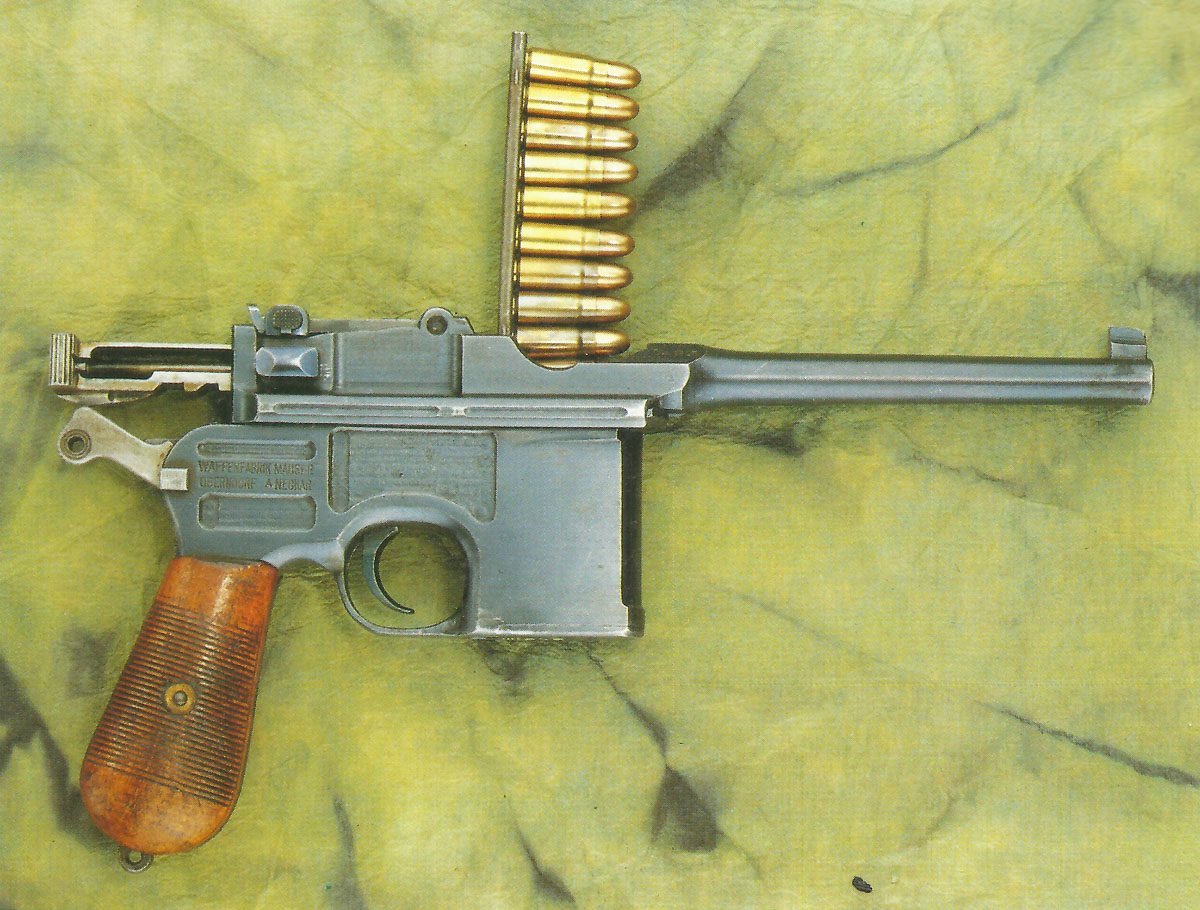
Mauser C/96
Type: Automatic pistol.
History
Designed as early as 1894 and with a cock intended attached to the rider’s saddle, the Mauser C/96 was already Winston Churchill’s preferred weapon during his time in the British Army. Afterwards copied again and again in different weapon factories around the globe, even in the 1980s a modern version was built as a machine pistol by the Chinese.
The history of the Mauser C/96 ‘Broomhandle’ pistol may have begun in the 1890s, but it is far from over. The C/96 was the world’s first real automatic self-loading pistol and over the decades it has produced many successors that are still in use.
The Mauser C/96 pistol was first manufactured in 1896 and immediately became a much sought-after weapon. The main attraction was its self-loading function, but many buyers were also attracted by the look of the gun. Simply carrying the weapon with you already sets the wearer apart from the others, but this was compensated by the disadvantage that it was not easy to maintain. It had a complicated mechanism and it took some time to understand. But the outsiders never noticed these hidden activities, and so they were impressed.
Everyone at the other end of the barrel of the pistol was equally impressed, albeit less to his delight. The 7.63mm cartridge fired from the C/96 was a high-speed projectile which, compared to other pistols of the time, caused considerable damage even over long distances.
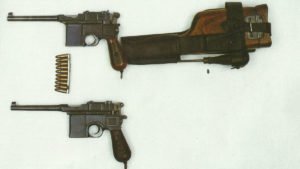
In order to take full advantage of this characteristic of the large fire range, there were wooden holsters, which could also be doubled to shoulder pieces, in order to aim more accurately. Originally these accessories were only built for well-to-do customers, but it didn’t take long before they attracted the attention of the military. They adopted these ideas, but wanted the cleaning accessories, additional loading strips and other accessories mounted on the holster. Finally, the wooden holster was replaced by a leather one with all these extras.
When World War One broke out, the Mauser automatic pistol C/96 was widely used. Many were sold to officers and also to various other countries, since at that time the officers had to procure their own handguns themselves. Many were fascinated by the C/96 and also many British officers carried it. Even Winston Churchill wore a Mauser C/96 during his time behind the trenches of the First World War.
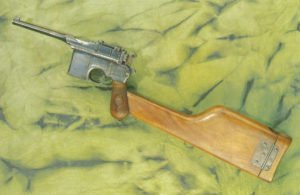
It was this 1912 model that increasingly made the C/96 a special assassination weapon, triggered by the introduction of a powerful 9 mm cartridge by Mauser, known as ‘Mauser Export’. This used a bullet identical to the Parabellum cartridge, but with a greater muzzle velocity of 1.362ft (415 metres) per second. This made the combination of pistol and cartridge to an excellent long-range weapon, which could be relatively easily concealed and used over distances well beyond the usual ranges of handguns.
The ‘Mauser Export’ pistols were often used for covert operations and killing missions all over the world, especially in the Balkans, where the C/96 was the most preferred.
The importance of this special cartridge does not need to be overestimated, however, as the standard Mauser 7.63 mm bullet also offered more than average performance.
During the First World War, the various shapes of the Mauser C/96 in the trenches were not as successful as some other pistols. The complex mechanism of the weapon suffered under the conditions of the trench warfare, where it came into contact with dirt and mud. Therefore, the C/96 was mainly used by soldiers behind the front line, such as artillerymen.
The automatic pistol was also used with some success by the new German flying units. It was practically one of the first weapons ever used in air combat when German pilots tried to shoot at nearby Allied aircraft and their pilots with their otherwise unarmed aircraft.
The C/96 was probably better than most other firearms in these difficult conditions, forcing Allied pilots to respond with less suitable pistols and rifles. But this did not happen long before machine guns were used in the planes, and so the time of the pistols in aerial combat ended as fast as it had begun.
During the First World War, Mauser produced thousands of the C/96 – mainly the 1912 model – to meet the ever-increasing demands. The quality of many of these war-built specimens suffered, and a modification was made in 1916 to allow the pistol to fire 9 mm Parabellum ammunition. These pistols had a large ‘9’ burnt into the rear piston, which was colored red.
After the armistice, the Allied banned the Mauser company to supply weapons to the German army and so the company looked for new customers. Many commercial deals were made by assembling pistols from existing spare parts, but the biggest post-war customer was the new Soviet Union. Mauser produced the 7.62 mm model, known as the ‘Bolo’, which was supposedly derived from the ‘Bolshevik’.
This version had a 3.9in (99 mm) long barrel and a shortened magazine for 6 cartridges. The overall appearance was clean and much smoother than the earlier models. The ‘Bolos’ were used in large quantities by both sides during the Russian Civil War in the early 1920s and even more were bought in 1926.
In the late 1920s, Mauser lost customers to a number of overseas Mauser copy producers. The appeal of the C/96 was not limited to the war combatants of the First World War and a number of C/96s had been sold to Persia and China before the war broke out, where the model was welcomed.
So it did not take long until manufacturers from other countries made copies of the C/96 for this market. Especially in Spain direct copies of the weapon were built for sales to China and other Far Eastern countries.
Also in China itself the C/96 was built in all variants after. Some of them were complete copies, others just looked like that and used a different mechanism. In addition, there were still some exhibits, which were rather more dangerous for the shooter than his target.
These Chinese weapons were usually also marked with Chinese marks to indicate their origin and were built in thousands of pieces for the local market.
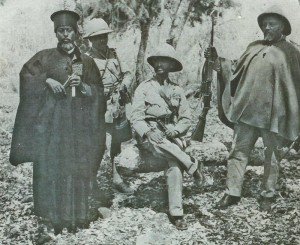
The value of a weapon the size of the C/96 that could shoot fully automatically was doubtful, but the results could still be dramatic. Especially at short distances the 10-rounds magazine was quickly emptied and the recoil made the barrel pull upwards from its target just as quickly. This didn’t seem to be a problem for the Chinese, who were enthusiastic about this new Spanish and locally built version.
These weapons quickly became a special status symbol and the warlords often equipped their personal bodyguards with them. This ensured that the necessary respect was shown to these men everywhere.
The violent pulling up of the muzzle during firing was easily controlled by the Chinese by simply holding the weapon sideways to cover a wide arc with horizontal fire.
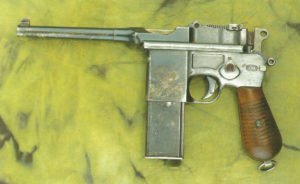
The company changed the basic mechanism of the C/96 slightly to the Model 712, which became known as the ‘Schnellfeuer’ (‘rapid fire’). This was a more advanced weapon than many of the foreign-built models, with an extended magazine that could hold up to 20 cartridges. In addition, there was a much better quality of workmanship and most of the weapons were equipped with a device for attaching a shoulder piece.
This weapon was just as successful as many of the previous models, although it did not have much combat value. It only earned respect for the wearer and soon appeared as a terrible assassination weapon. King Alexander II of Yugoslavia was murdered by such a weapon in 1934.
The German military, on the other hand, was less impressed, but nevertheless some were built for the German Wehrmacht. Some went to the Luftwaffe, even more to the Waffen-SS and other organizations, such as the Hitler Youth. Also, the German Kriegsmarine (German Navy) received a series, which had been ordered by the Chinese, but were not delivered.
In German operations, the ‘Schnellfeuer’ was not widely used in combat, but often by the Waffen-SS in actions behind the front, mainly against resistance fighters and partisans. The special units of the division ‘Brandenburg’ also used them for their covert operations.
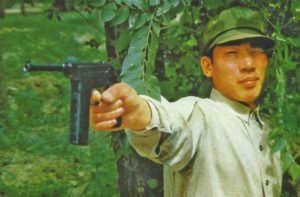
However, the history of the Mauser C/96 automatic pistol did not end here. In China the production of the various copies was continued and used in all campaigns until the communist victory in the civil war of 1948-49. And the C/96 is still carried there by individuals, who use it today rather as a ranking award than as a combat weapon.
Specifications Mauser C/96 Military Model
Specifications:
| Mauser C/96 | Specification |
|---|---|
| Type | automatic self-loading pistol |
| Caliber | 7.63 mm or 9 mm |
| Length | 12.125in (30.80cm) |
| Weight | 2.69lb (1.22kg) |
| Barrel | 5.51in (14cm) |
| Feed System | 10-round detachable box magazine (Model 1932 also with 20-rounds) |
| System of Operation | Recoil; Mauser rising block lock system |
| Muzzle velocity | 1,420 ft per second (433 m/sec) |
Service statistics:
| Mauser C/96 | Figures |
|---|---|
| Manufactures | Mauser |
| Production delivery | 1896 |
| Final delivery | 1938 |
| Production figure | c.270,000 (150,000 used by the German Army 1914-18); 95,000 Model 1932 (70,000 exported to China; 7,800 used by German troops) |
| Price per unit | ? |


